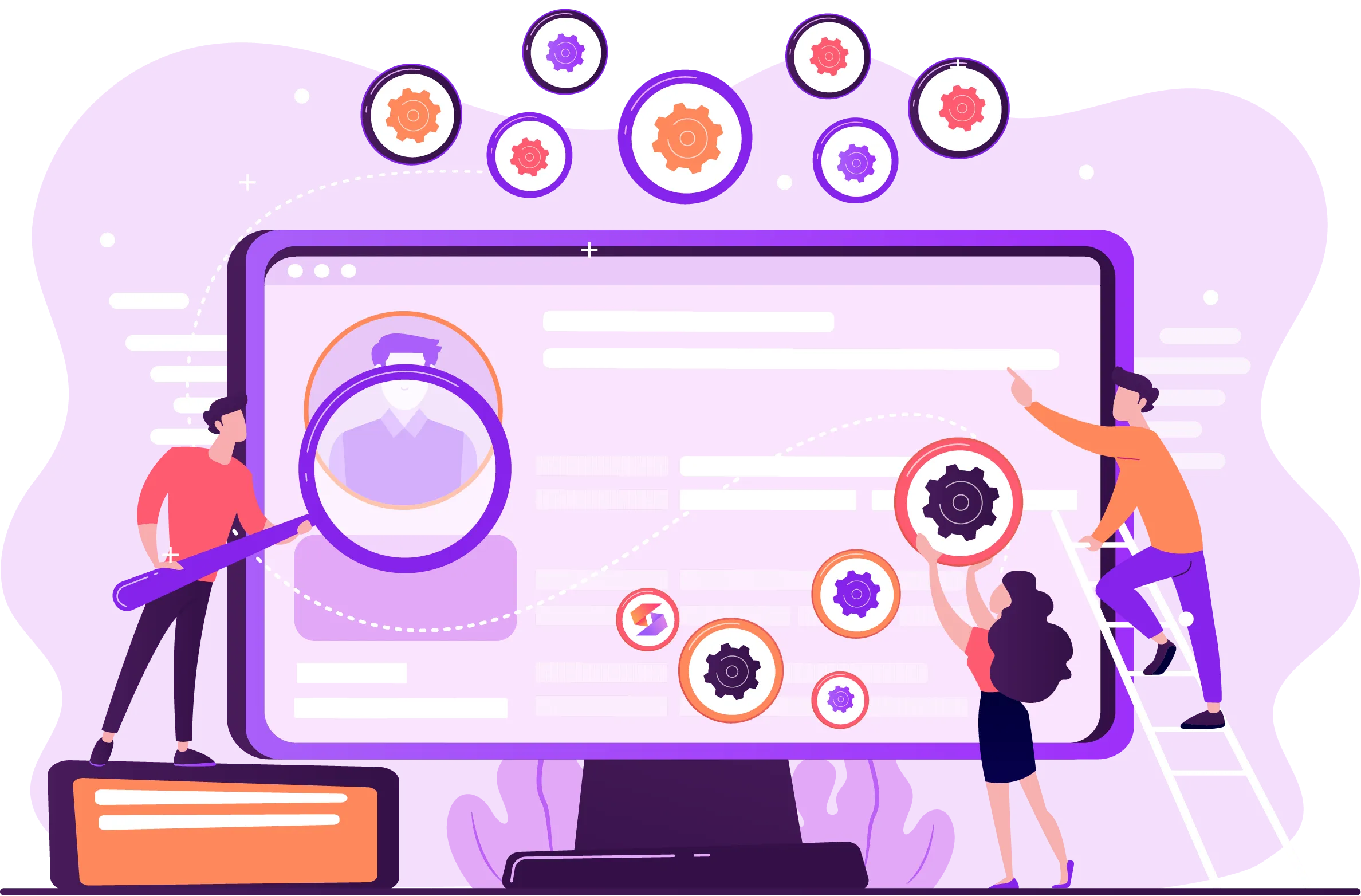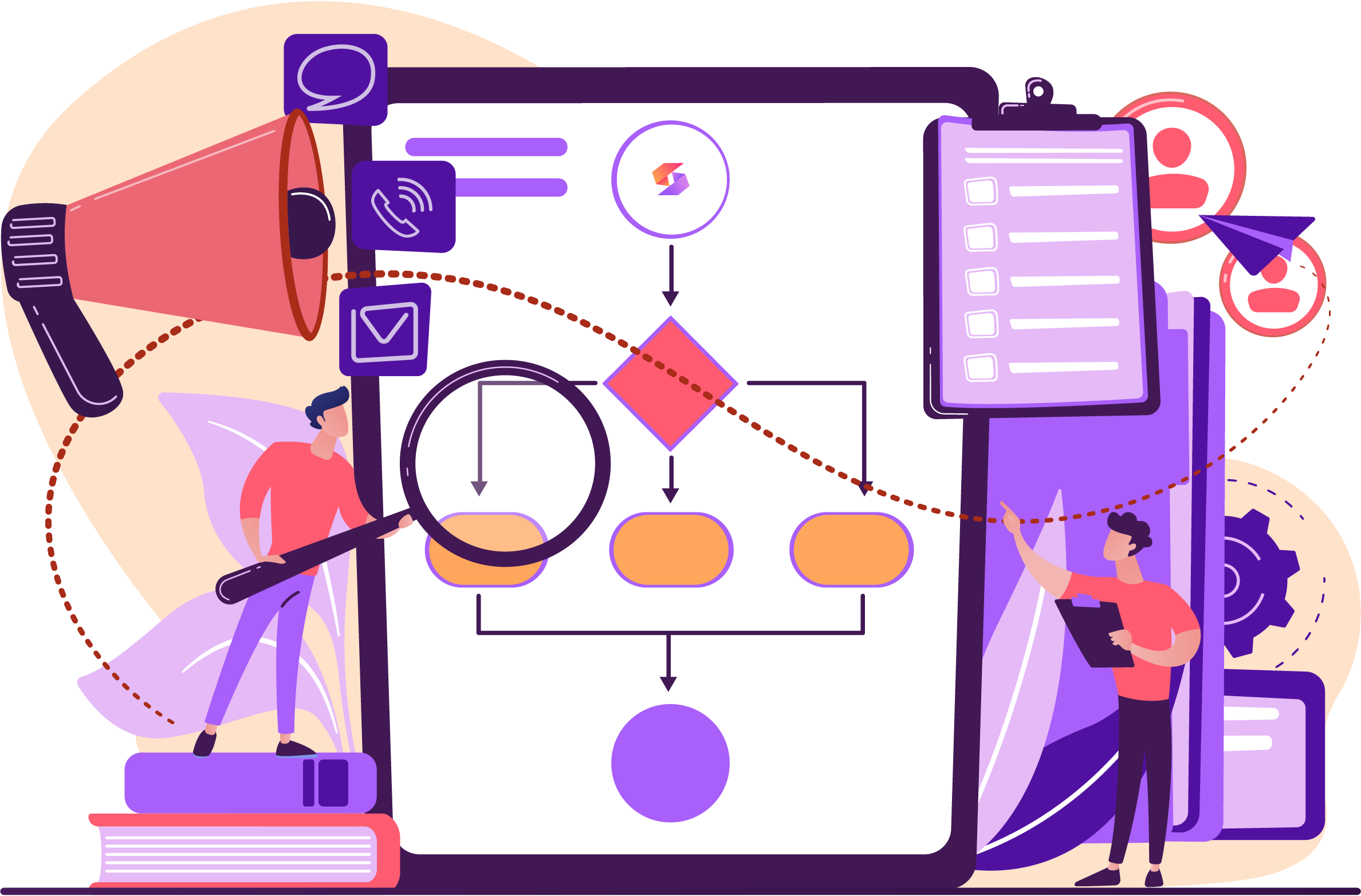A streamlined approach to any work can fuel efficiency and keep one focused on achieving the said goal. Recruitment is no different. Tons of tasks, multiple candidate profiles, client’s expecting faster turnaround and above all, limited time to deliver, recruiting is in no way a walk in the park. So, a recruitment process that not only keeps you on track to close more jobs faster but provides you space to spend time away from work, not worried about your job, is necessary to excel in this competitive industry.
As you manoeuvre through this post, you learn key recruitment process steps, tips and tricks to enhance your recruiting productivity and become a pro recruiter.
Recruitment Definition for Agencies
Recruitment is an effort to attract, identify, engage and shortlist the right candidate for a particular job role. Whenever an organisation realises the need for a new employee, they notify their hiring managers who reach-out to recruiters. This often happens when hiring managers fail to find a suitable candidate through internal recruiting or when it’s a new job. The head hunters here understand, in detail, the type of candidate the organisation is looking for and accordingly begin their process of screening, matching and shortlisting candidates. Even in a pool of countless candidates, discovering the select few that match an organisation's requisite can be an overwhelming process for recruiters. Hence, the need for a well-structured human resource recruitment process.
Difference Between Recruitment and Selection
More often than not, recruiters and HR professionals confuse recruitment with selection. While recruiting can be defined as the complete process of identifying, engaging and shortlisting the right candidate for a particular open position, selection is a part of that process. Selection refers to the evaluation of candidates with a motive to select them. Meaning, during selection the shortlisted candidates are assessed on varied criteria in an effort to discover the best fit for the job role. Interviews and tests during the selection process are a common method of conducting these evaluations.
Why do you need to streamline your recruitment process?
Get the job requisite, prepare job descriptions, put them on job posting sites, screen resumes and shortlist candidates – if this is all it takes you to discover your unicorn then why, at all, do you need to learn and apply the best practices for recruiting? Let’s see
Know Your Talent Acquisition Need in Detail
As a recruiter, the less you know, the more complicated it gets for you to discover the right candidate for a position as you trickle down the recruitment and selection process. Thus, having a thorough insight about the ideal candidate who would fit the job role is paramount. In this scenario, an avid recruiter would go beyond understanding skills and experiences and dig deeper into the behavioural and psychological aptitude required to furnish the job role.
Keep your eye on the ball
Recruiters are tasked with discovering candidates for varied job openings. While for someone you might be at the screening stage, for others, you wouldn't even have prepared a job description yet. With such high demand for productivity, it's easy to get trapped in the mix. A simplified recruitment process can prevent you from falling into the mess and keep you focused on closing the right jobs with right candidates, faster.
Attract Best Candidates For the Job
Attracting the best talents for the job is, in a nutshell, the primary role of a recruiter. However, when it’s evident that 37% of US employees are passive candidates who are working at an organisation and open to new positions but not actively looking for a job, it is increasingly difficult to discover top talents. With a recruitment process set to target these candidates, you might just be able to win them over to make that shift for good.
Put a pause on bad candidate experiences
64% of recruits and HR experts predict that the future employment will be in the hands of the candidates/employees and not employers. Studies have also indicated that 72% of candidates who have had a good interview experience are more likely to join an organisation as opposed to a bad one. Delivering positive candidate experience is growing increasingly important and with a recruitment plan in place, you can execute it effortlessly.
Best Practices To Streamline Your Recruitment Process
Make Your Recruiting Process Uniform
While you might recruit for different job roles for varied clients, your recruitment strategy must be standardised. You must take every candidate through a fixed channel of evaluation to reduce bias and discover the right candidates faster. Uniformity is also more useful when there are tens of potential candidates and several decision makers are involved in making the hire. It also displays a sense of professionalism and involves confidence in your clients.
Perfect Your Job Description
A clear, technically sound and detailed job description allows potential candidates to know, in detail, about the job, the company and the expectations they are anticipated to meet as they take over the role. In this way, they are able to decide if the job is a good fit for them or not. It also helps you receive more refined candidates who are genuinely interested in filling the position.
That being said, manually creating an extensive job description can take up alot of your time. But, with AI in recruiting, you can choose free to use job description makers that are easy to use and craft thorough job descriptions for all types of positions in different industries.
Do Your Do Diligence On A Candidate
After shortlisting candidates and before moving to the next round of interviews and tests it’s important that you learn more about the potential employees. A quick research on their interests and social media presence can make you more informed about the candidate’s social responsibility, intellect and overall personality. Further, each candidate’s need to make the shift is also different from the other and navigating through these needs can help you understand the candidate and their fit to the organisation in detail.
Go For Motivated Candidates Who Do Their Research
Yes, skills and experiences of a candidate are important factors to consider while making a recruiting decision. However, often companies miss on the drive and motivation of a candidate to work for the organisation. Sometimes, it’s a good idea to shortlist candidates who are more motivated to work, even though they have a bit less experience or lack certain skills. These candidates put in extra efforts to fill the gap in their aptitude and often stick with the company for long. While skills can be taught, a candidate’s drive to work in the organisation cannot be manipulated in the long run.
Also, prefer candidates who do their research before an interview. It shows their growth mindset and preparedness before making critical decisions such as choosing a job.
Spend More Time Reviewing Candidates
It’s natural that with an increased influx of resumes you often rely on keyword oriented resume parsers or ATSs to screen and store candidate data in a more accessible format. Some ATSs even go as far as to automatically remove irrelevant candidates from the pool all together. However, a lot of these parsers fail to provide in-depth insights and that’s where Skima’s talent intelligence comes into play. Skima gives you detailed insights of candidates from within your own database.
Skima for recruitment: Reduce Your Time To Hire By Up to 50%

Skima makes recruitment easier with talent intelligence. As recruiters, we are not immune to the fact that recruiting can take days, weeks and even months. A big reason for such an extended duration is the draggy process of posting and reposting jobs on varied portals and waiting for applicants. Skima completely diminishes the need for recruiters to indulge in job posting. It helps you discover the right candidates for an open position from within your existing database. As qualified applicants move faster in the process, recruiters witness a reduced time to hire by up to 50%.
FAQs
What are important aspects of recruiting?
Successful recruiting blends strategy and humanity. Craft clear job requirements, tap diverse sourcing channels (but before that check your own database for potential candidates with Skima), and evaluate candidates fairly. Prioritise a positive candidate journey with timely communication. Strengthen your employer brand, streamline processes, and engage talent consistently for a vibrant, skilled workforce that drives success.
What are the steps in the recruitment process?
The recruitment process begins with identifying hiring needs, crafting job descriptions, and posting them on various platforms. Screening applications, conducting interviews, and assessing candidates follow. Finally, successful candidates are offered the position, and the onboarding process initiates, ensuring a smooth transition into the organisation.
Which is the best recruitment tool for candidate matching?
Skima is the leading talent intelligence platform that uses AI and machine learning to match candidates with job opportunities. It uses recruiters' existing candidate databases to discover hidden talents.



